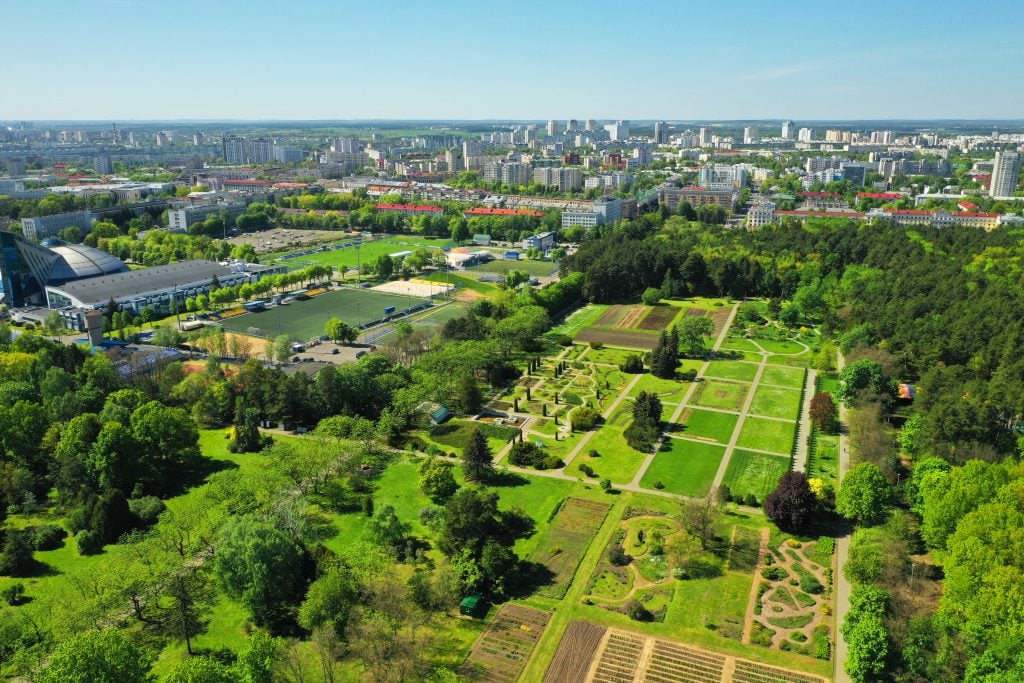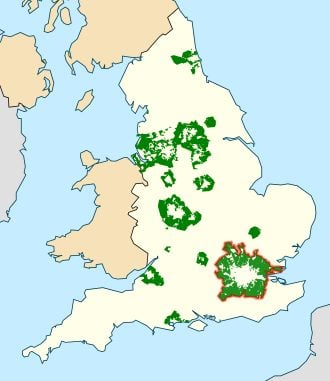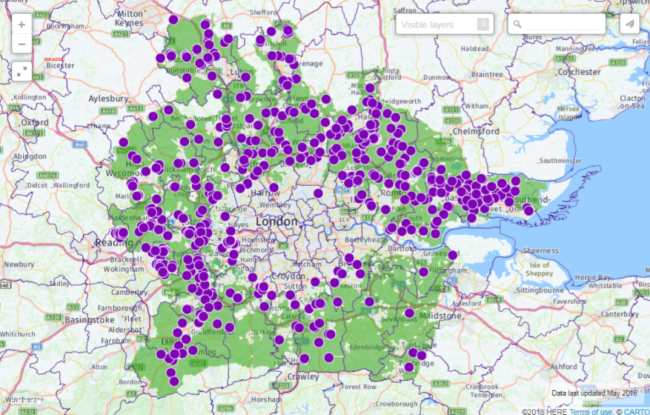

Ever dreamt of living in a home surrounded by lush, green landscapes? Picture peaceful, open fields stretching as far as the eye can see. This might sound like an idyllic setting, but such areas are often part of the Green Belt – a designated stretch of land that protects the countryside from urban sprawl. While it serves a crucial purpose, the Green Belt can impact your ability to build or expand on your dream home.
So, what exactly is the Green Belt, and why does it matter to you? In simple terms, it’s a zone of land around towns and cities where development is restricted. Its primary purpose is to preserve natural landscapes, prevent overdevelopment, and encourage the regeneration of urban areas.
However, these restrictions may affect your property plans. If your home or potential development site is located within a Green Belt, obtaining planning permission can be challenging. While some exceptions exist, strict rules are in place to ensure the land remains protected.
Understanding how the Green Belt works can save you time, money, and heartache when planning future projects. It’s essential to know the potential barriers before committing to any large-scale developments.
In this guide, we’ll explore how the Green Belt affects you and what steps you can take if your dream home is in one of these zones.
What is a Green Belt?
A ‘green belt’ or ‘greenbelt’ site is an area of largely undeveloped, wild, or agricultural land which surrounds larger cities. It’s identified in a Council’s Local Plan as an area. Which needs to be kept free of development. This stops the city from spreading and becoming any larger (urban sprawl).
(Note: A Green wedge site is different to a greenfield site which just refers to an area of land. That hasn’t previously been developed. Green belt sites are almost always greenfield sites. However, greenfield sites aren’t always green belt sites.)
Other objectives of the Urban growth boundary policy are to:
- Prevent neighbouring towns from merging together.
- Protect the unique character of rural communities that might otherwise be absorbed by expanding suburbs.
- Protect natural or semi-natural environments;
- Ensure that urban dwellers have access to the countryside.
- Improve air quality within urban areas.
- Encourage development within existing built-up areas.

Green belts in England
Urban growth boundary of London
The green belt around London is called the ‘Metropolitan Greenbelt’. It comprises parts of Greater London and the six adjoining ‘home counties’ (Berkshire, Buckinghamshire, Essex, Hertfordshire, Kent and Surrey), parts of two of the three districts of the small county of Bedfordshire and a small area in Copthorne, Sussex.
The first major proposals, for the Green wedge were put forward from 1890. However, the first to gain widespread support was put forward by the London Society (LS) in its Development Plan of Greater London 1919. Particularly, the Metropolitan Greenbelt was eventually formally proposed by the Greater London Regional Planning Committee in 1935. “To provide a reserve supply of public open spaces and recreational areas and to establish a green belt or girdle of open space”. Moreover, it was defined and in place from around 1952. Certainly, the Metropolitan Greenbelt is subject to minor annual variations, and covers an area approximately three times larger than London.
A green belt site is different to a greenfield site which just refers to an area of land that hasn’t previously been developed. Green Belt sites are almost always greenfield sites, but greenfield sites aren’t always Green Belt sites.
Purpose of the Green Belt
The Green Belt has a total of five primary objectives:
- Prevention of Urban Sprawl: In maintaining a specific degree of separation around the cities and towns, the Green Belt ensures that they do not merge together.
- Protection: This is done by maintaining a real environment for agriculture, wildlife, and recreation.
- Promotion of urban redevelopment: The focus shall be on developing the brownfield sites instead of the greenfield areas.
- Contribution towards historical town conservation: Besides the larger cities, the Green Belt also critically maintains and respects the thereby sets and buss of the smaller towns located around it.
- Provision of green spaces: The Green Belt ensures that there is adequate provision for open spaces that benefit wellness and recreation, not to mention the pleasure of being outdoor.
How does the Green Belt affect planning permission?
The construction of new buildings and their extension is subject to very limited conditions in the Green Belt. Where the same is desirable, it shall affect the following:
Restricted development
Most development on the Green Belt is prohibited in order to protect the natural environment. Exceptions can be made only on very strict grounds, where “exceptional circumstances” have to be demonstrated (somewhere logical as addressing the need for housing or addressing public benefits).
Extensions or alterations
Modest extensions or alterations may be considered for existing buildings in the Green Belt, where the developments are not out of proportion to the size of the original building or harm the openness of the Green Belt area.
Replacement buildings
One may establish a new building on Green Belt land to substitute a demolition building, but the new building shall not exceed the floor space of the demolished building or affect the openness of the Green Belt area.
Change of use
There are exceptions, wherein change of use can be requested for a building, subject to careful scrutiny (e.g., conversion of agricultural buildings into habitable rooms).
Special projects
Agricultural buildings, forestry, or community amenities (e.g., schools, recreational facilities) could be considered by the Local Planning Authority. But the impact upon the openness of the Green Belt will be weighed very closely.
Can I build on green belt land?
Generally, no. The green belt is protected from most forms of development and approval should only be given in very special circumstances. If the purpose of development is appropriate to a rural area.
However, it is still possible to apply to the local planning authority to request planning permission on a Urban growth boundary site. Or to request that green belt land is released for housing.
Thereafore, the map below shows current development proposals to London’s Green Belt.
Map developed as part of a partnership project between the London Urban growth boundary Council and CPRE branches in Herts, Essex, Kent, Beds, Bucks, Berks, Surrey and London.
References: http://londongreenbeltcouncil.org.uk/threats_map/ http://www.cprelondon.org.uk/resources/reports/item/2334-londongreenbelt
Share this…
How can I get planning permission for Green wedge land?
Getting planning permission for housing development on green belt sites is one of the hardest objectives to achieve under our planning system but it’s not impossible.
There are, however, three main routes that can be considered:
- Appropriate Developments
If buildings are already incorporated within a green belt site. Then, ‘infilling’ a small gap between existing buildings can be acceptable. Also, if the new development wouldn’t have a greater impact on the ‘openness’ of the green belt than the buildings which it’s replacing. Then applications are normally acceptable. Otherwise you could consider an eco-home development. As per Para 55 of the National Planning Policy framework, Urban growth boundary planning permission can be granted for ‘truly outstanding. Additionally, innovative’ developments that ‘raise the standard of design’. - Very Special Circumstances
Development can be allowed if you are able to show that there are ‘very special circumstances’ why it needs to take place.Essentially this means showing why there is no other site where that development can take place. - Exceptional Circumstances
In most cases, the exceptional circumstances are usually that the amount of development necessary to meet a Council’s needs. Similarly, it simply doesn’t fit on the non-green belt sites that are available. Obviously, the council will look at areas of the green belt that could be considered for development. Furthermore, this gives land owners the opportunity to promote their sites through the local planning process to try to convince the Council. That their site should be identified for development. This type of approach is known as ‘strategic land promotion’ and takes a long time (5-10 year process).
How can I find out if my land is in a green belt?
You should contact your local planning authority to find out if your land is in a green belt area. On the other hand, any policies or restrictions that may apply as a result.
You can find the contact details for your local planning authority on the Planning Portal.
If you have any questions about planning an extension and potential issues with green belt sites. Or, just questions about creating your dream home in general. Go ahead and book a free call below with Yoop.
Understanding the Green Belt and Its Impact on Development
Ever dreamt of a picture-perfect home nestled amongst rolling green fields? While idyllic, such landscapes are often protected by the Green Belt. But, what exactly is the Green wedge, and how might it impact your plans? Besides, this guide unravels the mysteries of the Green Belt, explaining its purpose and how it affects development and potentially, your dream home.
Throughout this guide, we’ve explored the Green wedge role in shaping the landscape. Basically, the development opportunities around urban areas. Understanding its purpose and restrictions can empower you to make informed decisions about where to live and the potential challenges (or benefits) you might face. As a matter of fact, whether you’re a homeowner, aspiring buyer, or simply curious about land use planning, familiarizing yourself with the Green Belt. That can shed light on the delicate balance between development and preserving precious green spaces.
How Yoop Architects can help?
At Yoop Architects, we specialise in complex planning permissions, including those on Green Belt land. Our expertise in North London and the surrounding areas gives us flexibility to:
- Perform thorough site assessments to ascertain development potential,
- Formalize design proposals to fulfil local council requirements and keep the Green Belt’s character,
- Advocate on your behalf to planning authorities in order to secure the planning permission, and
- Create sustainable and eco-friendly designs that relate harmoniously with the environment.
No matter whether you are going for a small extension, a replacement structure, or some totally weird project, high on exceptions—we will present you throughout all the phases to see you actualise what you have always dreamt about.
Why consider the Green Belt for your home?
Pros: The Green Belt, although imposing, provides various benefits.
Lovely living: quiet, countrified living around.
Heritage acceptance: Ireland has a strong green belt, and it works. Nature and culture have many charming remnants.
Investment potential: sometimes it is so dreamy to own a home in the Green Belt as these properties overcome these challenges with their location and unavailability.
Conclusion
Therefore, you can follow on with your home development project within or near these areas, with it being necessary to understand the Green Belt. An appropriate understanding does the magic in making your dream place respect the principles of Green Belt on the backdrop.
Yoop Architects creates solutions that marry their creativity with full compliance and respect for the environment, endeavouring to help you reach the desired points with ease.
So, are you ready to take the plunge? Contact Yoop Architects today and let us build your successful project!


